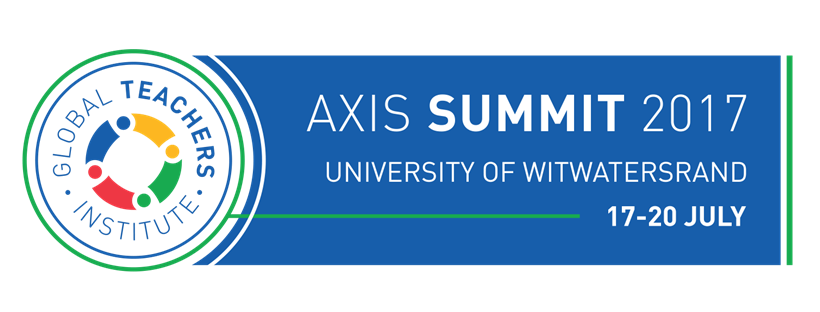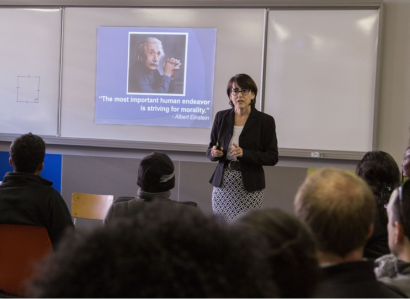
I was fortunate to have the opportunity to attend and present at the Global Teachers Institute Axis Summit. The summit was focused on education in South Africa but teachers from all over Africa and America attended. Here are some of my key takeaways from the summit:
- Personal Connection & Reflection are vital. Use a personal Venn diagram to create relationships with students by finding what you and your students have in common. At the beginning of the school year share your life story and have students complete the diagram to see what they have in common and explain what’s unique to them. Also, have students monitor their own progress towards mastering unit objectives. This process is key to empowering students to owning their learning. (Dawn Oler)

2. Expect, inspect & respect mistakes. Create a culture where mistakes are celebrated and used for learning. The metacognitive process of evaluating your own learning & mistakes is vital to deeper insights. (Amanda Burton & Linda Korbus)

3. Decolonize our minds. Critically examine how Eurocentric narratives & institutions have formed over time. Actively seek counter-narratives and passionately immerse ourselves in cultural practices (languages, traditions, etc.) even if they are not considered “mainstream” or “normal.” Encourage our students to explore and celebrate their own cultures and develop pride for their identities. (Baba Bantu)

4. Set personal & professional goals every year. Our personal & professional lives are intertwined . Share your goals with others to keep us accountable. (John Gilmore)

5. Make your values transparent. Nearly every activity and critical decision made in school should include a conversation about values. For example, hallway monitors can recognize students’ citizenship when they pick up trash that’s not their own. Teachers can encourage citizenship by debating social issues in classes & clubs. (Pam Bylsma)

Administrators can keep values (such as those highlighted in the Character Counts program) front and center by referring to them when resolving conflicts between staff or making controversial decisions transparent to parents. The following ethical frameworks can help students, teachers and administrators make tough decisions:
- Harm/Beneficence: Does it do less harm and more good than the alternatives?
- Publicity: Would I want this choice published in the newspaper?
- Reversibility: Would I think this a good choice if I were among those affected by it?
- Code of Ethics: How does this choice relate to the ethical standards of my profession?
SOURCE: Computing Cases
6. Understand Special Needs. Can you imagine trying to draw with your eyes closed? Describe a painting you had never seen before? These types of exercise can help educators experience the types of struggles some students with special needs experience. By better understanding the challenges students face, teachers can better differentiate & scaffold learning activities. (Tania Ham)
7. Connect & Network. Be a teacher warrior for your students—-the challenges many of them face require us to give it our all everyday. Nearly every problem we face has already been solved by someone, somewhere—connect & network! (Sunarku Clifford Sykes)
8. Bring your passions into your classroom. Connect your passions outside of school to the subjects you teach in school. Even subtraction & dancing can go hand-in-hand. Keep students engaged and moving, then they won’t have time to get distracted. (Kurt Minnar)
This article was written by Arpan Chokshi and first published at teachereflections.com, July 25, 2017
